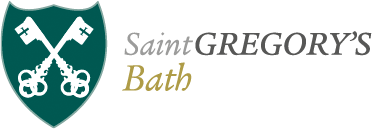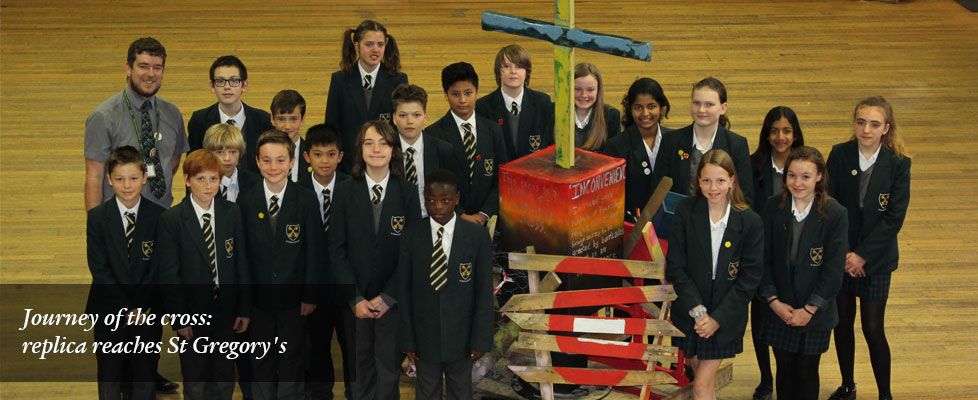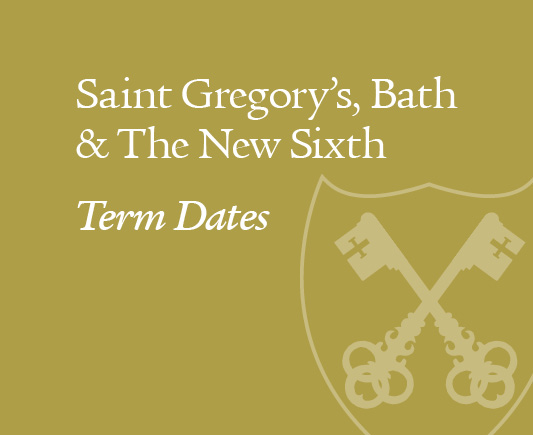As you may know there is currently a replica Lampedusa cross making it’s way around every school of the diocese as part of a pilgrimage in this diocesan year of prayer. The cross was created by St Edward’s School, Sherfield English and aims to help us all focus on the plight of refugees and encourage us to spread compassion and hope, not concern and suspicion. Our Chaplaincy students worked hard putting together an emotive and powerful art installation to house the cross, based around the idea of refugees being an inconvenience. It was placed in the hall right in the middle of the assembly set up, in the middle of lessons and in the middle of the dining area – to create an inconvenience, to become the focus. We called it ‘Inconvenience: A comparison between treatment of refugees: Barricades vs Hope’

Francesco Tuccio is a carpenter from the small Italian island of Lampedusa who came up with the original concept of the Lampedusa crosses. Seeing hundreds of refugees in haphazard boats crashing on the rocks that surround the Island, Tuccio was moved to gather the driftwood from the wrecked boats and turn them into crosses, which he offered to survivors as a small but powerful symbol of hope. For a time, when the refugee crisis topped the news headlines, you couldn’t get away from stories of capsized boats in the Mediterranean, migrants – both alive and dead washing up on the shores of holiday Islands and so on. The sad part came when people started to see the arrival of these innocent victims as an inconvenience, as a problem to sort out, as a crisis that needed to be passed on to someone else.
Brexit has stolen the attention of the media these days but the persecution of thousands around the world hasn’t stopped. For the arrival of the cross we chose to focus our installation upon the contrasting responses that refugees face when arriving on foreign shoes. We also placed around the hall an exhibition based around the 34,361 refugees who lost their lives in the 25 years up until the last World Refugee Day. Their names, their stories, the circumstances surrounding their untimely deaths were documented by United for Intercultural Action, a European Network of 550 anti-racist organisations in 48 countries. In reality there are so many more, these are just the reported deaths. We used this data and the stories documented to share the harsh reality of this humanitarian crisis, but more importantly highlight the hope we can offer.

This is why the centrepiece of the installation held the cross aloft – the symbol of hope given to refugees is high above the barricade. The plinth holding the cross was designed to represent a flame with the story of Tuccio written onto it. Finally, the display had colourful sheets of paper, just like the wood used to construct the crosses, for students and staff to write a message or prayer of hope upon. These could be for those who have died or still journeying towards a better life, before being places into a box built into the artwork. Here are a few of those messages left in the artwork:
“Jesus loves you no matter what you’ve been through. ‘Perfect love casts out fear.’ (1 John 4:18)”
“If you stay strong, you can get through anything. Always remember that there is a light at the end of the tunnel. Your suffering will come to an end.”
“Never give up, you’re welcome here.”
“You are hope, you are love, you are brave and you are the future. Keep on.”
“Dear God, please help refugees when they try to find a new life, and protect them from all the danger that they go through. Also, please help others to help them in any way they can. Guide them through tough times and be with them when they are struggling, let them always know you are with them. Amen.”
“To all the parents and carers taking their children away from the conflict in your home country, you are doing the right thing. You are giving them the future they deserve to have and they will thank you for that.”
“Dear God, please pray for all those people who risk their lives crossing borders or trying to get to safety. We are all equal. It doesn’t matter if we’re white, black, believe in a God or not. This is one world, and we need to change the way we act. Refugees running away from their homes, floods, disasters, conflict – we must make the world different for all our family and friends. Amen.”
Mr M Robinson
Lay Chaplain




